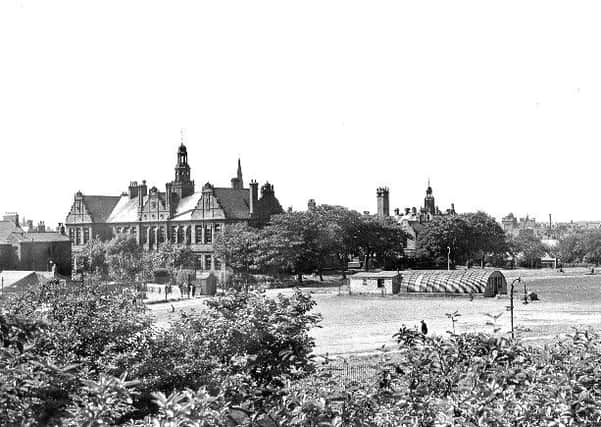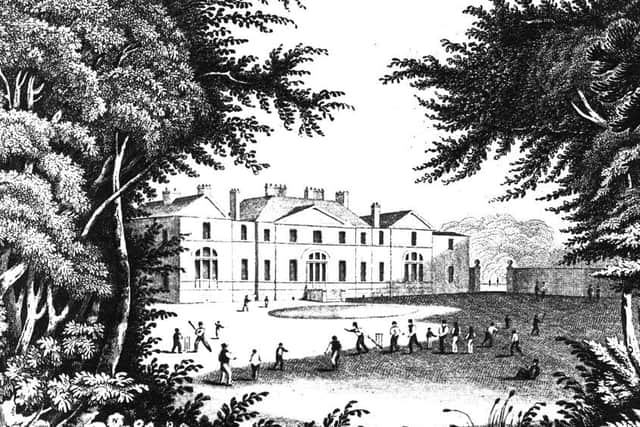The Sunderland school which thrived until tragedy struck


It was, in its time, the largest boarding school in the north of England.
Thanks to the Sunderland Antiquarian Society and its excellent work, we can share the tragic story of the rise and fall of the school once more.


Advertisement
Hide AdAdvertisement
Hide AdIts founder, James Cowan, taught in a Quaker School before coming to Wearside.
He opened his first school in William Street in 1822 with 20 scholars. By 1824, it was flourishing and moved to much larger premises in Green Street.
Students were up at 7am for an hour of work before breakfast from 8am to 9am. Three hours of schoolwork followed before dinner from noon to 2pm. The classroom beckoned once more from 2pm to 5pm.
And once the students had sat down for tea, from 5pm to 6pm, they were back at lessons from 6pm to 8pm. Wednesday and Saturday afternoons were free.


Advertisement
Hide AdAdvertisement
Hide AdBefore long, Cowan was receiving more student applications than he could cater for and looked for larger premises.
In 1830, he bought the Grange estate and moved in. Today we would consider this to be close to the centre of town but in those days it was on the outskirts.
Grange School opened the same year with about 50 boarders and the same number of day scholars. Great stress was placed upon sport with football introduced as an organised game.
Cricket and handball were also played and the school prospectus emphasised that safe bathing under proper supervision was available.
Advertisement
Hide AdAdvertisement
Hide AdThe food, prepared by Cowan’s mother, was good and substantial.
The boys only returned home in the summer break, other holidays being spent at the Grange.
By 1845, there were 160 boarders and Cowan was turning down scores of applications every year. Then tragedy struck and everything changed.
On Wednesday, October 15, 1845, 38 boys and 4 teachers went on a bathing trip to Hendon Beach. Three teachers, all strong swimmers, went in with them with one remained on shore to supervise.
Advertisement
Hide AdAdvertisement
Hide AdThe sun shone, the sea was smooth. Suddenly, for some unknown reason, they were all in trouble. The teacher called them ashore but one of the older boys, further out, was in difficulties. The teacher and three boys went out to his aid.
However, along with two of the boys, he was swept away whilst the other two boys were brought to shore. They were rushed to the Hendon Baths nearby but one was dead on arrival. The other three bodies were found later.
Two of the boys were brothers, the sons of Sir David Baird of East Lothian. The third was also from Scotland. The teacher whose name was Special, was buried in the Quaker burial place in Nile Street.
The tragedy was a body blow to the school – it forced James Cowan to retire and he soon sold the school.
Advertisement
Hide AdAdvertisement
Hide AdHis successor, James Iliff, from Liverpool, was a capable schoolmaster but in his very first year an epidemic of fever broke out in the school and one boy died. The school was closed and all the boys sent home. This time most of the boys did not return.
Iliff was forced to sell up in 1853. Shortly afterwards the estate was laid out for building sites and The Esplanade, Grange Crescent, St George’s Square and later Cowan Terrace (named after James Cowan) came into existence.
The school house was eventually taken over by a coach builder and the Mansion House itself became a school. It was still in use as such until the outbreak of the Second World War in 1939 but later West Park Central was built adjoining the Mansion House on its east side.
Today most of the estate is taken up by the Civic Centre.
But for that tragedy on Hendon Beach in October 1845 and the subsequent retirement of James Cowan, Sunderland might today have a prominent public school to match the likes of Eton and Harrow.